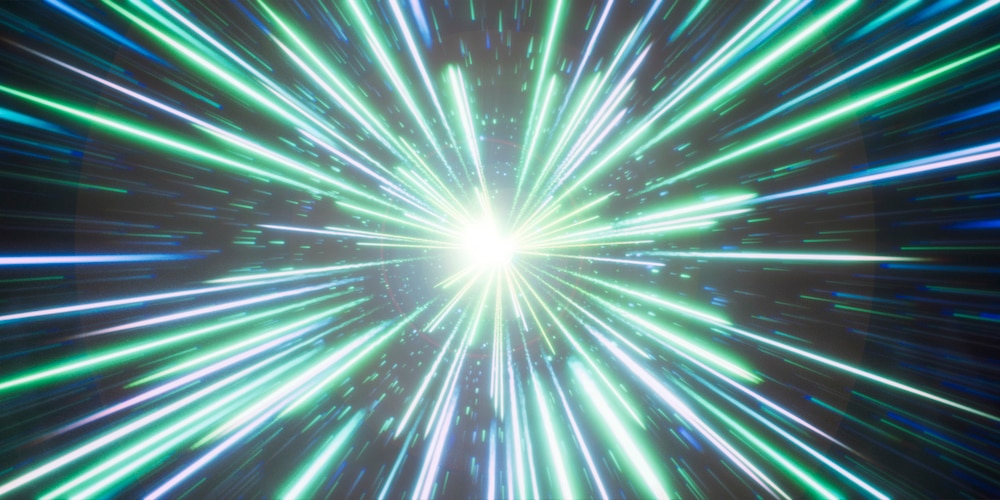Create a free profile to get unlimited access to exclusive videos, sweepstakes, and more!
What would you actually see if you zoomed through space at warp speed?
It could be recreated on Earth.

It seems that just about every space movie or TV show ever has shown at least one scene where a spaceship accelerates, and you see it through the captain’s eyes — stars streaking past as it powers through the void at (or close to) light speed or even faster.
Moya from SYFY (back when it was Sci-Fi Channel) show Farscape might have blasted off even faster than the speed of light. This Leviathan, a living ship piloted by a symbiotically attached creature, was capable of pulling off starburst maneuvers. It would accelerate so fast (much to the chagrin of Rygel), the stars outside appeared smudged, but was that all Pilot was actually seeing? The speeds that Moya accelerated at would have been enough to also make him see a peculiar warm glow.
Put yourself in the cockpit for a moment. As you accelerate faster and faster, with stars streaking by, that glow would appear — it comes from superfast acceleration as opposed to the speed you were going at before. Initial speed does not matter. This happens because of the Unruh Effect, nearly undetectable because it needs massive accelerations. Now researcher Barbara Soda of the University of Waterloo and Perimeter in Canada, who led a study recently published in Physical Review Letters, has gotten that much closer to actually observing it.
“The Unruh effect does not exactly have to do with what speed you are moving at, but rather the acceleration,” she told SYFY WIRE. “The warm glow is an addition to the classic ‘streaking stars’ visualization, and that it has to do with acceleration.”
The Unruh effect is the result of an increase in the temperature of empty space as something accelerates through it. Because of the temperature rising, you would see photons and other particles swarming in what would manifest itself as that otherworldly glow. It would be nearly impossible to see the Unruh effect action if you sat around and waited for it. You probably wouldn’t even realize it happened. Humans aren’t about to be zooming around at the speed of light, or anywhere near it, soon, so nobody is about to replicate a scene from Farscape.
Soda and her research team instead suggest purposely trying to make it happen in a lab. The Unruh effect is not as obvious as other phenomena going on around it as a projectile flies through space. Though this is still hypothetical, they think it could be observable if surrounding effects were suppressed while it was enhanced. So how could you recreate the effect experienced by something accelerating ridiculously fast? A previous study by another group of researchers proposed detecting it with sound particles. Soda would do it another way.
“By adding a lot of photons into the space occupied by an Unruh-DeWitt detector, you can do this simply by turning on a laser of the appropriate frequency,” she said. “The probability of the Unruh effect to happen is proportional to the number of photons present in the field.”
There is a way to pick up on the Unruh effect if it is duplicated on terra firma. Unruh-DeWitt detectors have already been used to search for quantum particles and evidence of effects such as the curves in spacetime and quantum entanglement, so the idea is right on. The thing is that you have to have unreal acceleration to achieve that glow. Otherwise, it would literally take billions of years. For surrounding effects to be invisible, the detector’s trajectory would have to be adjusted so its velocity would remain constant, decelerate, accelerate rapidly, and finally return to that constant velocity. Absorption and emission of light would make this possible.
“What is remarkable about it is that it makes the Unruh-DeWitt detector transparent to everyday phenomena, the absorption and emission of light,” said Soda. “That’s interesting, because absorption and emission are responsible for us being able to see the world.”
So reaching the point of actually seeing the Unruh effect is going to depend on advanced engineering and extreme precision rather than some futuristic tech — or a living spaceship capable of starbursts.














